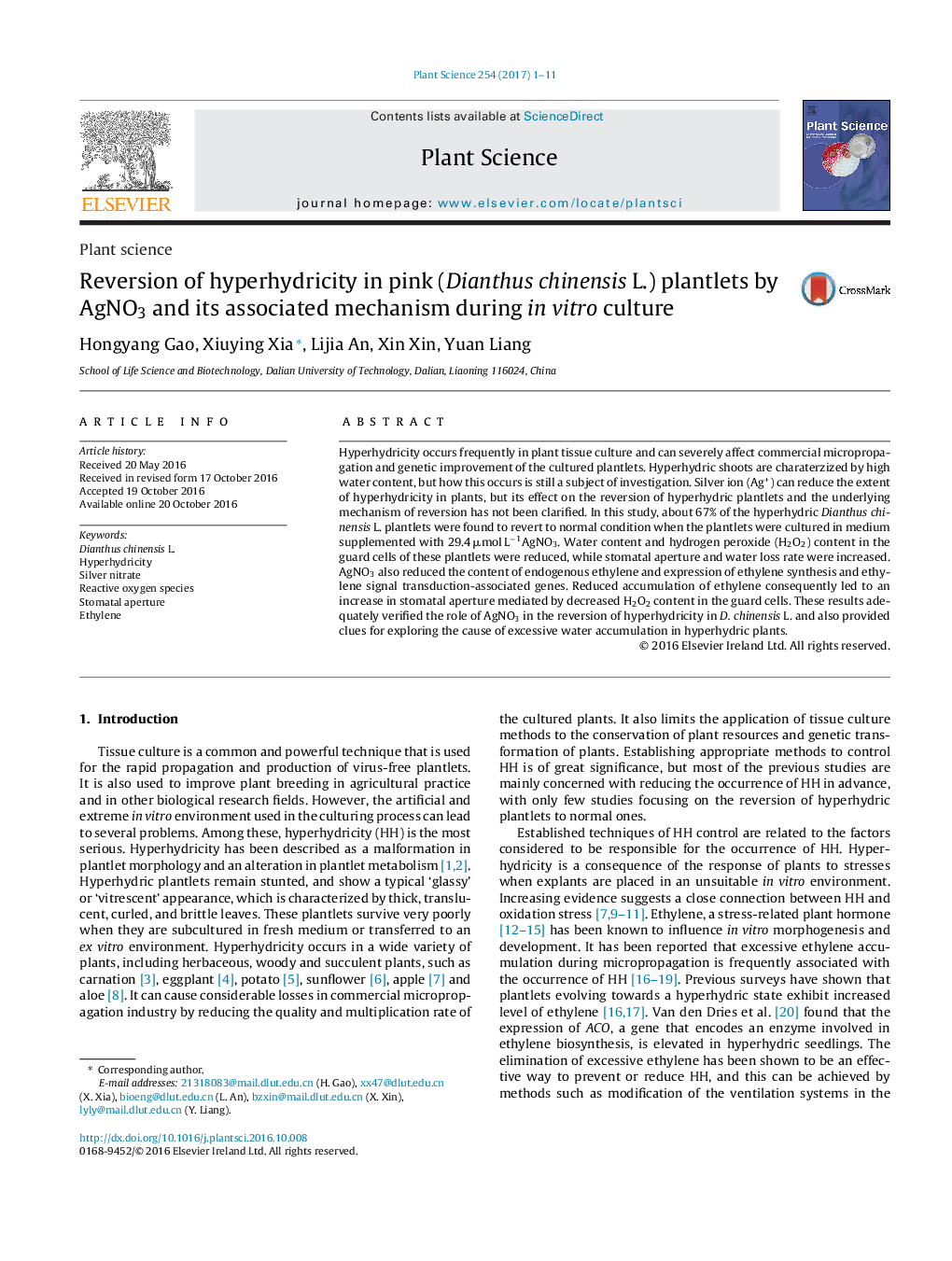| Article ID | Journal | Published Year | Pages | File Type |
|---|---|---|---|---|
| 5515850 | Plant Science | 2017 | 11 Pages |
â¢AgNO3 improved hyperhydricity reversion in D. chinensis L. shoots culture.â¢AgNO3 decreased the generation of excessive ethylene in hyperhydric plantlets.â¢AgNO3 reduced the production of reactive oxygen species in hypehydric plantlets.â¢The reverted plantlets displayed increased stomatal aperture and water loss rate.
Hyperhydricity occurs frequently in plant tissue culture and can severely affect commercial micropropagation and genetic improvement of the cultured plantlets. Hyperhydric shoots are charaterzized by high water content, but how this occurs is still a subject of investigation. Silver ion (Ag+) can reduce the extent of hyperhydricity in plants, but its effect on the reversion of hyperhydric plantlets and the underlying mechanism of reversion has not been clarified. In this study, about 67% of the hyperhydric Dianthus chinensis L. plantlets were found to revert to normal condition when the plantlets were cultured in medium supplemented with 29.4 μmol Lâ1AgNO3. Water content and hydrogen peroxide (H2O2) content in the guard cells of these plantlets were reduced, while stomatal aperture and water loss rate were increased. AgNO3 also reduced the content of endogenous ethylene and expression of ethylene synthesis and ethylene signal transduction-associated genes. Reduced accumulation of ethylene consequently led to an increase in stomatal aperture mediated by decreased H2O2 content in the guard cells. These results adequately verified the role of AgNO3 in the reversion of hyperhydricity in D. chinensis L. and also provided clues for exploring the cause of excessive water accumulation in hyperhydric plants.
